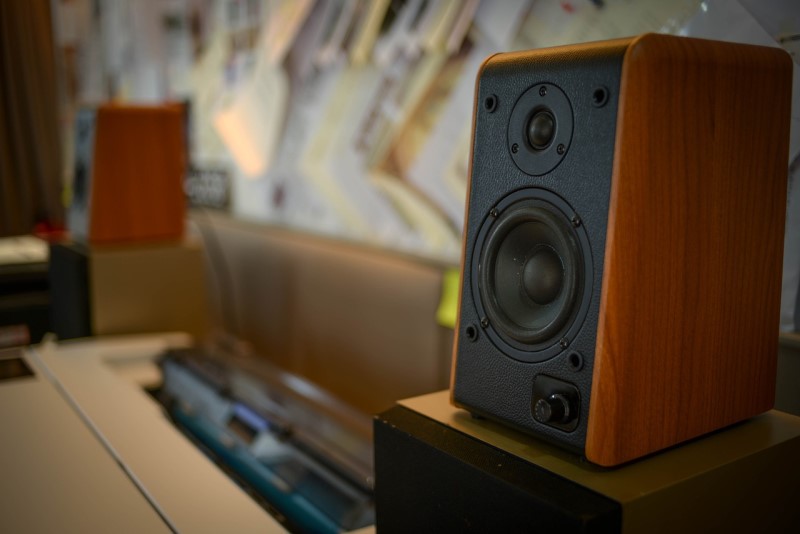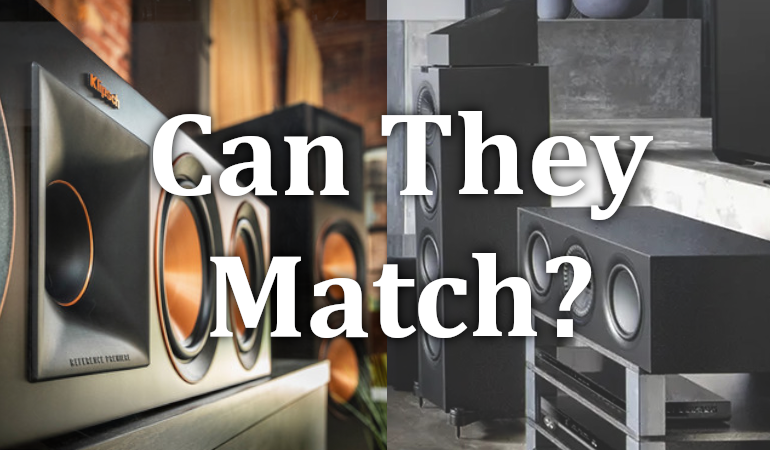Can My AV Receiver’s Room Correction Fix Mismatched Speakers
Most AV receivers come with room correction these days. These programs can set up your speakers’ trim levels and distances, as well as EQ them. But there is a lot of confusion surrounding room correction programs. One question we get a lot is if an AV receiver’s room correction program can fix mismatched speakers. Let’s discuss.
What are Mismatched Speakers
We can’t all buy a full speaker system all at once. While we save money between purchases, we often find that the speakers we were planning on buying go out of stock or increase in price. Maybe we find a new speaker that costs less than the one we were initially planning on purchasing. Regardless, we might either end up with speakers from different manufacturers or are considering buying speakers that don’t perfectly match the ones we already own.
The concern is timbre matching. If your speakers aren’t all from the same manufacturer, or from the same line, they might sound substantively different from each other. Sometimes this is a big problem, other times it isn’t. Many people look at room correction and see a solution. If your room correction is meant to make all your speakers sound better (and, generally, more even), then timbre matching shouldn’t be important, right? The room correction will fix it!

We’ve Got Good News, and Mostly Bad News
The “good news” (if you want to call it that) is that this is theoretically possible. You could EQ one speaker to sound very much like another. It would take a lot of doing, and it would be a very manual process, but it is theoretically possible.
That said, no AV receiver’s room correction program will fix mismatched speakers for you. They take measurements of the speakers in your room and try to make the sound as even as possible for everyone. Room correction programs aren’t trying to match one speaker to another. They are trying to get rid of as many errors as possible.
More importantly, if you manually EQ’ed one speaker to sound more like another, there are intrinsic characteristics of speakers that can’t be affected by EQ. You can’t change a speaker’s off-axis response with EQ. You can’t affect its extension (either low or high) very much either. Does one speaker have a rear port and the other doesn’t? You may be able to EQ them to sound similar…until you put them near a wall. Suddenly that port will make the ported speaker sound significantly different because of boundary reinforcement. Not to mention the distance from the walls can make a pretty big difference as well.
Take Away
It is easy to get sound out of a speaker. It is hard to get accurate sound. We’d love it if we could tell you that your AV receiver’s room correction could fix all your mismatched speakers woes, but it just isn’t the case. Even in an anechoic chamber (a room without audio reflections) getting two speakers to sound identical would be a difficult task. In your room, it is virtually impossible. While you can probably get away with speakers that sound similar, trying to fix a mismatched speaker with room correction is unlikely to work.



I’ve seen posts by Chris Kyriakakis (Audyssey), where he states that timbre matching is one of the goals that is incorporated into MultEq. Do you think it makes any difference? Chris also stated that it’s not a real big deal for speakers to be of the same brand or model for positions other than LCR’s and that MultEq will take care of it. Wouldn’t having “accurate” speakers somewhat negate the problem regardless of mixing brands or models? Seems like then, all one would have to do is EQ for the position of the speakers and listening position in the room.
What Chris is talking about is making the response more alike which, in a way, is timbre matching. It is not the same as making a Polk and a Klipsch speaker sound identical.